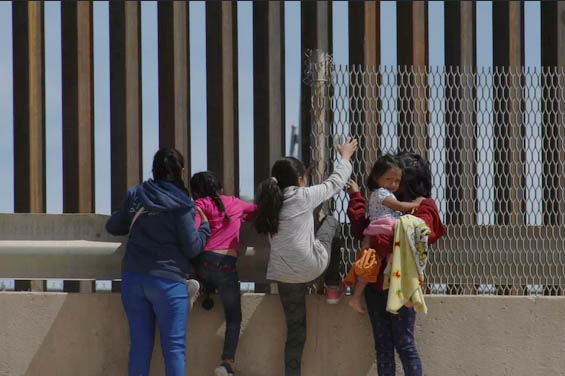NOTE FROM THE EDITOR:
Dear Readers:
Many countries strive to convince their people of their development of democracy, but a democracy could also be part of the agenda of a system to chain its people in a very disguised way. Is this the case of the great democracy of India? Are we next? The following article by James Corbett, could give us more information about it. – Marvin Ramírez.
Yes, biometric ID is rolling out in India and over a billion people are being locked away behind its electronic bars
by James Corbett
Whenever they talk about India and its “inevitable” rise to world economic dominance, establishment hacks like Thomas “Iraq War booster” Friedman always seem compelled to note that the country is “the world’s largest democracy.” They might want to talk to the residents of the now-defunct Jammu & Kashmir before invoking that phrase, but the underlying point seems to be that India—with its growing economic might and vibrant, functional parliamentary system—can provide a freedom-respecting alternative to the Chinese communist model for economic development and industrialization.
The pundits are, as usual, half right. India is being used as a testing ground and a potential model for the developing nations to follow . . . but that model has nothing to do with freedom. Rather than building some sort of system for protecting and fostering the rights of the individual, the Indian government has been quietly erecting the walls of the world’s largest biometric prison.
A recent story out of India puts the bars of this prison in perspective. Last month a “citizenship check” left nearly two million people in a legal limbo that could see them become stateless foreigners in danger of imprisonment and deportation from the country of their birth. The check took place in Assam, an Indian state fraught with its own history of conflict and tension between Hindus and Muslims.
The larger story is fascinating, but suffice it to say the fast-growing Assamese Muslim minority—despite including many native-born locals—is being cast as an immigrant invading force supplied by influxes of migrants from neighboring Bangladesh. The citizenship check is the result of an accord that was struck after a particularly violent anti-immigrant pogrom in the 1980s that saw hundred (or thousands, depending on the source) of Muslim migrants killed. To appease the local Assamese population, the government promised to perform a mass citizenship check to oust the illegal immigrants.
Only now, three decades later, is this being done, and it is not difficult to see why: Prime Minister Modi and the populist Hindu nationalist wave that he and his BJP party are riding see it as another battlefront in their war against the Indian Muslim minority.
As one might imagine, the scene has descended into chaos, with some local Assamese who were born in Assam and lived there all their lives finding that they are not on the official citizen roll and thus are in danger of being declared stateless migrants and deported. The Indian authorities are now building new prisons in the state to house thousands of these newly displaced people while they are processed and sent out of the country.
All of which brings us back to the biometric prison idea. As you may or may not know, the Indian government has spent the last decade enrolling over one billion people in the largest biometric database ever constructed. Dubbed “Aadhaar” and sporting a logo which combines a fingerprint with the rays of the sun, the database involves the collection of a digital photograph, ten fingerprints, and iris scans of every man, woman and child in India. The information is used to create a unique 12-digit number which, tied to an Aadhaar card, serves as a form of national identification.
Well, there you go! The perfect solution to the conundrum in Assam, right? Why not just tie the Aadhaar database to the citizenship rolls and immediately revoke the national identification from anyone not on the list? Well, in fact, that has been the plan all along. In Assam, unlike other parts of India, the Aadhaar identification would not just be a proof of residence, but would be tied to the National Register of Citizens.
There’s just one catch: Assam has been far behind in their enrollment of citizens into the Aadhaar program. In fact, some districts only began enrolling citizens late last year.
The underlying propaganda narrative in this situation is evident to all. The immense and hitherto impossible task of registering, databasing and tracking over one billion people is now finally within the Indian government’s grasp. No longer can those like the born-and-bred Assamese who find they’ve been left off the citizenship roll simply blend into the vast Indian crowds and continue on with their lives. Now they will be instantly flagged whenever they are forced to use their Aadhaar card to identify themselves.
And it is not only the authorities in Assam who are feeling the benefits of being wardens in this vast biometric prison. Any number of authoritarians ensconced in the Indian bureaucracy are touting the benefits of this revolutionary system of control.
Take the tax office, for example. In April of this year it became mandatory for all Indians to link their PAN card—a “permanent account number” in the form of a unique 10-digit identifier on a laminated card required by the income tax department for all tax filings—to the 12-digit Aadhaar number. Now every Indian’s taxes will be linked directly to their biometric identification.
And the push is on to link this biometric ID to every other aspect of people’s lives . . . all in the name of convenience, of course.
How else to deal with the problem of people jumping India’s notoriously overcrowded trains or the touts that scalp tickets for crowded train cars? By issuing biometrics-based tickets, of course!
And you don’t want to pay with cumbersome cash, do you? Why go through all the hassle of using an anonymous, portable, untrackable payment method when you can use a handy dandy payment app that is directly linked to your national biometric ID?
And best of all for the psychopaths in charge, this Orwellian system of control is cheap, easy and risk-free! I mean, disregarding the fact that the Aadhaar database has already been breached and exposed one-fifth of the world’s population to identity theft. But what’s a totalitarian omelette without a few broken eggs (and by “few” I mean “billion” and by “eggs” I mean “people”)?
Yes, biometric ID is rolling out in India and over a billion people are being locked away behind its electronic bars. Keep this in mind the next time you see a blithering blowhard bloviating about “the world’s largest democracy” and pretending to worry about China’s social credit score.









